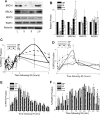β-HPV 5 and 8 E6 disrupt homology dependent double strand break repair by attenuating BRCA1 and BRCA2 expression and foci formation
- PMID: 25803638
- PMCID: PMC4372404
- DOI: 10.1371/journal.ppat.1004687
β-HPV 5 and 8 E6 disrupt homology dependent double strand break repair by attenuating BRCA1 and BRCA2 expression and foci formation
Abstract
Recent work has explored a putative role for the E6 protein from some β-human papillomavirus genus (β-HPVs) in the development of non-melanoma skin cancers, specifically β-HPV 5 and 8 E6. Because these viruses are not required for tumor maintenance, they are hypothesized to act as co-factors that enhance the mutagenic capacity of UV-exposure by disrupting the repair of the resulting DNA damage. Supporting this proposal, we have previously demonstrated that UV damage signaling is hindered by β-HPV 5 and 8 E6 resulting in an increase in both thymine dimers and UV-induced double strand breaks (DSBs). Here we show that β-HPV 5 and 8 E6 further disrupt the repair of these DSBs and provide a mechanism for this attenuation. By binding and destabilizing a histone acetyltransferase, p300, β-HPV 5 and 8 E6 reduce the enrichment of the transcription factor at the promoter of two genes critical to the homology dependent repair of DSBs (BRCA1 and BRCA2). The resulting diminished BRCA1/2 transcription not only leads to lower protein levels but also curtails the ability of these proteins to form repair foci at DSBs. Using a GFP-based reporter, we confirm that this reduced foci formation leads to significantly diminished homology dependent repair of DSBs. By deleting the p300 binding domain of β-HPV 8 E6, we demonstrate that the loss of robust repair is dependent on viral-mediated degradation of p300 and confirm this observation using a combination of p300 mutants that are β-HPV 8 E6 destabilization resistant and p300 knock-out cells. In conclusion, this work establishes an expanded ability of β-HPV 5 and 8 E6 to attenuate UV damage repair, thus adding further support to the hypothesis that β-HPV infections play a role in skin cancer development by increasing the oncogenic potential of UV exposure.
Conflict of interest statement
The authors have declared that no competing interests exist.
Figures






References
-
- zur Hausen H (1999) Papillomaviruses in human cancers. Proc Assoc Am Physicians 111: 581–587. - PubMed
-
- zur Hausen H (2002) Papillomaviruses and cancer: from basic studies to clinical application. Nat Rev Cancer 2: 342–350. - PubMed
-
- Bouwes Bavinck JN, Feltkamp M, Struijk L, ter Schegget J (2001) Human papillomavirus infection and skin cancer risk in organ transplant recipients. J Investig Dermatol Symp Proc 6: 207–211. - PubMed
-
- Orth G, Jablonska S, Jarzabek-Chorzelska M, Obalek S, Rzesa G, et al. (1979) Characteristics of the lesions and risk of malignant conversion associated with the type of human papillomavirus involved in epidermodysplasia verruciformis. Cancer Res 39: 1074–1082. - PubMed
Publication types
MeSH terms
Substances
Grants and funding
LinkOut - more resources
Full Text Sources
Other Literature Sources
Miscellaneous

